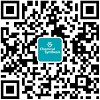REFERENCES
2. Li Y, Yu J. New stories of zeolite structures: their descriptions, determinations, predictions, and evaluations. Chem Rev. 2014;114:7268-316.
3. Wang Q, Astruc D. State of the art and prospects in metal-organic framework (MOF)-based and MOF-derived nanocatalysis. Chem Rev. 2020;120:1438-511.
4. Lin JB, Nguyen TTT, Vaidhyanathan R, et al. A scalable metal-organic framework as a durable physisorbent for carbon dioxide capture. Science. 2021;374:1464-9.
5. Ding SY, Wang W. Covalent organic frameworks (COFs): from design to applications. Chem Soc Rev. 2013;42:548-68.
6. Das S, Heasman P, Ben T, Qiu S. Porous organic materials: strategic design and structure-function correlation. Chem Rev. 2017;117:1515-63.
8. Fan H, Mundstock A, Feldhoff A, et al. Covalent organic framework-covalent organic framework bilayer membranes for highly selective gas separation. J Am Chem Soc. 2018;140:10094-8.
9. Ma Y, Cui F, Rong H, et al. Continuous porous aromatic framework membranes with modifiable sites for optimized gas separation. Angew Chem Int Ed Engl. 2022;61:e202113682.
10. Li J, Cheng Z, Wang Z, et al. Ultramicroporous covalent organic framework nanosheets with functionality pair for membrane C2H2/C2H4 separation. Angew Chem Int Ed Engl. 2023;62:e202216675.
11. Wang P, Chen X, Jiang Q, et al. High-precision size recognition and separation in synthetic 1D nanochannels. Angew Chem Int Ed Engl. 2019;58:15922-7.
12. Yue L, Wang S, Zhou D, Zhang H, Li B, Wu L. Flexible single-layer ionic organic-inorganic frameworks towards precise nano-size separation. Nat Commun. 2016;7:10742.
13. Lin RB, Li L, Wu H, et al. Optimized separation of acetylene from carbon dioxide and ethylene in a microporous material. J Am Chem Soc. 2017;139:8022-8.
14. Pang JJ, Yao ZQ, Zhang K, et al. Real-time in situ volatile organic compound sensing by a dual-emissive polynuclear Ln-MOF with pronounced LnIII luminescence response. Angew Chem Int Ed Engl. 2023;62:e202217456.
15. Wang Z, Huang Y, Xu K, et al. Natural oxidase-mimicking copper-organic frameworks for targeted identification of ascorbate in sensitive sweat sensing. Nat Commun. 2023;14:69.
16. Lim DW, Sadakiyo M, Kitagawa H. Proton transfer in hydrogen-bonded degenerate systems of water and ammonia in metal-organic frameworks. Chem Sci. 2019;10:16-33.
17. Liu L, Yin L, Cheng D, et al. Surface-mediated construction of an ultrathin free-standing covalent organic framework membrane for efficient proton conduction. Angew Chem Int Ed Engl. 2021;60:14875-80.
18. Song J, Li Y, Cao P, et al. Synergic catalysts of polyoxometalate@cationic porous aromatic frameworks: reciprocal modulation of both capture and conversion materials. Adv Mater. 2019;31:e1902444.
19. Yuan S, Peng J, Cai B, et al. Tunable metal hydroxide-organic frameworks for catalysing oxygen evolution. Nat Mater. 2022;21:673-80.
20. Liu S, Chen H, Zhang X. Bifunctional {Pb10K2}–organic framework for high catalytic activity in cycloaddition of CO2 with epoxides and knoevenagel condensation. ACS Catal. 2022;12:10373-83.
21. Li H, Li C, Wang Y, et al. Pore structure unveiling effect to boost lithium-selenium batteries: selenium confined in hierarchically porous carbon derived from aluminum based MOFs. Chem Synth. 2023;3:30.
22. Wang L, Wang Y, Li Z, et al. PAF-6 doped with phosphoric acid through alkaline nitrogen atoms boosting high-temperature proton-exchange membranes for high performance of fuel cells. Adv Mater. 2023;35:e2303535.
23. Yuan Y, Zhu G. Porous aromatic frameworks as a platform for multifunctional applications. ACS Cent Sci. 2019;5:409-18.
24. Liu L, Su X, Qi M, Gao X, Ren H, Chen L. Facile synthesis of heteroporous covalent organic frameworks with dual linkages: a “three-in-one” strategy. Chem Synth. 2024;4:10.
25. Deng L, Ding Z, Ye X, Jiang D. Covalent organic frameworks: chemistry of pore interface and wall surface perturbation and impact on functions. Acc Mater Res. 2022;3:879-93.
26. Lu W, Wei Z, Yuan D, Tian J, Fordham S, Zhou H. Rational design and synthesis of porous polymer networks: toward high surface area. Chem Mater. 2014;26:4589-97.
27. Ben T, Ren H, Ma S, et al. Targeted synthesis of a porous aromatic framework with high stability and exceptionally high surface area. Angew Chem Int Ed Engl. 2009;48:9457-60.
28. Zhou DD, Chen P, Wang C, et al. Intermediate-sized molecular sieving of styrene from larger and smaller analogues. Nat Mater. 2019;18:994-8.
29. Zeng H, Xie M, Wang T, et al. Orthogonal-array dynamic molecular sieving of propylene/propane mixtures. Nature. 2021;595:542-8.
30. Dong Q, Huang Y, Wan J, et al. Confining water nanotubes in a Cu10O13-based metal-organic framework for propylene/propane separation with record-high selectivity. J Am Chem Soc. 2023;145:8043-51.
31. Lin RB, Li L, Zhou HL, et al. Molecular sieving of ethylene from ethane using a rigid metal-organic framework. Nat Mater. 2018;17:1128-33.
32. Zhai QG, Bu X, Zhao X, Li DS, Feng P. Pore space partition in metal-organic frameworks. Acc Chem Res. 2017;50:407-17.
33. Wei YS, Zhang M, Liao PQ, et al. Coordination templated [2+2+2] cyclotrimerization in a porous coordination framework. Nat Commun. 2015;6:8348.
34. Xiao Y, Chen Y, Hong AN, Bu X, Feng P. Solvent-free Synthesis of multi-module pore-space-partitioned metal-organic frameworks for gas separation. Angew Chem Int Ed Engl. 2023;62:e202300721.
35. Xu X, Wu X, Xu K, Xu H, Chen H, Huang N. Pore partition in two-dimensional covalent organic frameworks. Nat Commun. 2023;14:3360.
36. Hao M, Xie Y, Lei M, et al. Pore space partition synthetic strategy in imine-linked multivariate covalent organic frameworks. J Am Chem Soc. 2024;146:1904-13.
37. Zhang Z, Zheng Y, Dou Z, et al. Multivariate porous aromatic frameworks with high porosity and hierarchical structures for enzyme immobilization. ACS Cent Sci. 2023;9:488-93.
38. Jing Y, Wang C, Chen Y, et al. Crystallinity regulation and defects passivation for efficient and stable perovskite solar cells using fully conjugated porous aromatic frameworks. Angew Chem Int Ed Engl. 2023;62:e202301234.
39. Liu Y, Wang S, Meng X, Ye Y, Song X, Liang Z. Increasing the surface area and CO2 uptake of conjugated microporous polymers via a post-knitting method. Mater Chem Front. 2021;5:5319-27.
40. Jing X, Zou D, Cui P, Ren H, Zhu G. Facile synthesis of cost-effective porous aromatic materials with enhanced carbon dioxide uptake. J Mater Chem A. 2013;1:13926-31.
41. Rozyyev V, Thirion D, Ullah R, et al. High-capacity methane storage in flexible alkane-linked porous aromatic network polymers. Nat Energy. 2019;4:604-11.
42. Yuan Y, Sun F, Ren H, et al. Targeted synthesis of a porous aromatic framework with a high adsorption capacity for organic molecules. J Mater Chem. 2011;21:13498-502.
43. Xiao J, Lv W, Xie Z, Tan Y, Song Y, Zheng Q. Environmentally friendly reduced graphene oxide as a broad-spectrum adsorbent for anionic and cationic dyes via π–π interactions. J Mater Chem A. 2016;4:12126-35.
44. Hasan Z, Jhung SH. Removal of hazardous organics from water using metal-organic frameworks (MOFs): plausible mechanisms for selective adsorptions. J Hazard Mater. 2015;283:329-39.
45. Chen T, Zhang W, Li B, et al. Adsorptive separation of aromatic compounds from alkanes by π-π interactions in a carbazole-based conjugated microporous polymer. ACS Appl Mater Interfaces. 2020;12:56385-92.








